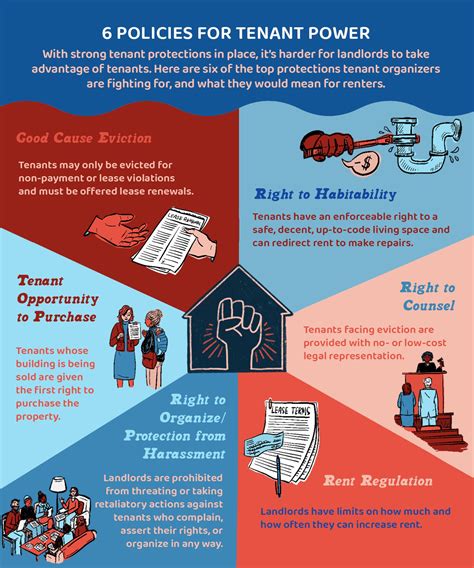
Coca-Cola is piloting innovative “reverse vending machines” that reward consumers for recycling their beverage containers, aiming to boost recycling rates and promote a circular economy. The initiative, currently being tested in several markets, incentivizes consumers by offering rewards such as discounts or loyalty points for each returned container.
Coca-Cola’s foray into reverse vending technology marks a significant step in its broader sustainability efforts, as the beverage giant grapples with mounting pressure to reduce plastic waste and enhance recycling infrastructure. These machines, designed to accept empty bottles and cans, are equipped with advanced recognition systems that identify and sort materials, ensuring proper recycling and reducing contamination. The company hopes the initiative will not only encourage recycling but also provide valuable data on consumption patterns and recycling behavior, enabling more targeted and effective waste management strategies.
The Drive for a Circular Economy
The reverse vending machine program is a crucial component of Coca-Cola’s broader vision for a “circular economy,” where materials are kept in use for as long as possible, minimizing waste and pollution. This approach necessitates a fundamental shift from the traditional linear model of “take-make-dispose” to a more sustainable system that prioritizes resource efficiency and waste reduction. Coca-Cola aims to achieve this by investing in recycling infrastructure, developing innovative packaging solutions, and engaging consumers in responsible waste management practices.
“We are committed to creating a world without waste, and reverse vending machines are an exciting way to engage consumers and incentivize recycling,” said a Coca-Cola spokesperson. “By offering rewards for returning empty containers, we can encourage more people to participate in recycling programs and help close the loop on our packaging.”
The company’s circular economy strategy involves several key pillars:
- Sustainable Packaging Design: Coca-Cola is actively exploring alternative packaging materials, such as plant-based plastics and aluminum, to reduce its reliance on virgin plastic. The company is also investing in technologies to improve the recyclability of its existing packaging.
- Collection and Recycling Infrastructure: Coca-Cola is working with governments, industry partners, and community organizations to improve recycling infrastructure in key markets. This includes supporting the development of collection programs, investing in recycling facilities, and promoting public awareness campaigns.
- Consumer Engagement: Coca-Cola recognizes that consumer behavior plays a crucial role in achieving its sustainability goals. The company is implementing various initiatives, such as the reverse vending machine program, to encourage consumers to recycle and reduce waste.
How Reverse Vending Machines Work
Reverse vending machines (RVMs) are automated systems that collect, sort, and process used beverage containers. Unlike traditional vending machines that dispense products, RVMs accept empty containers and reward users for their return. The basic functionality of an RVM involves the following steps:
- Container Insertion: The user inserts an empty beverage container (bottle or can) into the machine.
- Identification and Sorting: The machine uses optical sensors and barcode scanners to identify the type of material (e.g., PET plastic, aluminum) and its size. The machine then sorts the container into the appropriate storage bin.
- Compaction: To maximize storage capacity, the RVM compacts the containers, reducing their volume.
- Reward Dispensing: The user receives a reward for each container returned. The reward can be in the form of cash, store credit, discounts, or loyalty points, depending on the specific program.
The data collected by RVMs provides valuable insights into recycling rates, material types, and consumer behavior. This information can be used to optimize recycling programs, improve packaging design, and track progress towards sustainability goals.
Benefits of Reverse Vending Machines
The implementation of reverse vending machines offers several potential benefits for Coca-Cola, consumers, and the environment:
- Increased Recycling Rates: By offering rewards for recycling, RVMs can significantly increase recycling rates, diverting waste from landfills and reducing the demand for virgin materials.
- Reduced Litter: RVMs can help reduce litter by providing a convenient and incentivized way for consumers to dispose of their empty beverage containers responsibly.
- Improved Material Quality: RVMs collect clean and sorted materials, which are easier to recycle and produce higher-quality recycled products. This reduces contamination and improves the efficiency of recycling processes.
- Enhanced Consumer Engagement: RVMs provide a tangible and rewarding experience for consumers, encouraging them to actively participate in recycling programs and adopt more sustainable habits.
- Data Collection and Analysis: RVMs collect valuable data on recycling rates, material types, and consumer behavior, which can be used to optimize recycling programs and track progress towards sustainability goals.
- Support for a Circular Economy: RVMs play a crucial role in supporting a circular economy by ensuring that materials are collected, recycled, and reused, minimizing waste and pollution.
Challenges and Considerations
While reverse vending machines offer numerous benefits, there are also several challenges and considerations that need to be addressed to ensure their successful implementation:
- Cost: The initial investment in RVMs can be significant, including the cost of purchasing the machines, installing them, and maintaining them.
- Space Requirements: RVMs require space for installation and operation, which can be a constraint in some locations.
- Maintenance: RVMs require regular maintenance to ensure they are functioning properly and to empty the collected containers.
- Fraud Prevention: Measures need to be implemented to prevent fraud, such as the use of counterfeit containers or the manipulation of the reward system.
- Consumer Education: Consumers need to be educated on how to use RVMs properly and on the benefits of recycling.
- Integration with Existing Recycling Systems: RVMs need to be integrated with existing recycling systems to ensure that the collected materials are processed efficiently and effectively.
Coca-Cola’s Sustainability Goals
Coca-Cola has set ambitious sustainability goals, including:
- World Without Waste: The company aims to collect and recycle the equivalent of every bottle or can it sells globally by 2030.
- Sustainable Packaging: Coca-Cola is committed to making 100% of its packaging recyclable globally by 2025 and using at least 50% recycled material in its packaging by 2030.
- Water Stewardship: Coca-Cola is committed to replenishing the water it uses in its beverages and improving water efficiency in its operations.
- Climate Action: Coca-Cola is working to reduce its carbon footprint across its value chain, including its operations, packaging, and transportation.
The reverse vending machine program is just one of many initiatives that Coca-Cola is undertaking to achieve its sustainability goals. The company is also investing in innovative packaging solutions, supporting recycling infrastructure, and engaging consumers in responsible waste management practices.
Global Examples of Reverse Vending Machine Success
Reverse vending machines have been successfully implemented in several countries around the world, demonstrating their potential to increase recycling rates and promote a circular economy. Some notable examples include:
- Germany: Germany has a well-established deposit refund system (DRS) for beverage containers, which includes a network of reverse vending machines. The DRS has significantly increased recycling rates, with over 90% of deposit-marked containers being returned for recycling.
- Norway: Norway also has a DRS for beverage containers, which has resulted in high recycling rates. The country’s Infinitum recycling system operates a network of reverse vending machines that collect and process used containers.
- Sweden: Sweden has a DRS for aluminum cans and PET bottles, which is managed by Returpack. The system includes a network of reverse vending machines that collect and process used containers.
- Finland: Finland has a DRS for beverage containers, which is managed by Palpa. The system includes a network of reverse vending machines that collect and process used containers.
These examples demonstrate that deposit refund systems, coupled with reverse vending machines, can be highly effective in increasing recycling rates and promoting a circular economy.
Future of Reverse Vending Technology
The future of reverse vending technology is likely to involve several key trends:
- Advanced Sensor Technology: RVMs will likely incorporate more advanced sensor technology to improve the accuracy and efficiency of container identification and sorting. This could include the use of artificial intelligence (AI) and machine learning (ML) to analyze images and identify different types of materials.
- Integration with Smart Technologies: RVMs will likely be integrated with smart technologies, such as mobile apps and cloud-based platforms, to provide consumers with real-time information on recycling rates, rewards, and environmental impact.
- Customized Reward Systems: RVMs will likely offer more customized reward systems to incentivize recycling, such as personalized discounts, loyalty points, and charitable donations.
- Expansion to New Materials: RVMs could be expanded to accept a wider range of materials, such as glass, paper, and other types of plastic.
- Decentralized Recycling Systems: RVMs could be used to create decentralized recycling systems, where communities and businesses can collect and process their own waste, reducing transportation costs and environmental impact.
Expert Opinions on Reverse Vending Machines
Environmental experts and industry analysts have expressed varying opinions on the potential of reverse vending machines to revolutionize recycling.
“Reverse vending machines can be a valuable tool for increasing recycling rates, but they are not a silver bullet,” said Dr. Emily Carter, an environmental scientist at the University of California, Berkeley. “They need to be part of a comprehensive waste management strategy that includes improved collection programs, public education, and sustainable packaging design.”
“The success of reverse vending machines depends on several factors, including the level of consumer engagement, the availability of convenient locations, and the effectiveness of the reward system,” said Mr. John Smith, a recycling industry analyst at Green Business Consulting. “It is also important to address potential challenges, such as fraud prevention and integration with existing recycling systems.”
Some experts have raised concerns about the cost and complexity of implementing reverse vending machine programs.
“Reverse vending machines can be expensive to purchase, install, and maintain,” said Ms. Sarah Jones, a waste management consultant at Sustainable Solutions. “It is important to carefully evaluate the costs and benefits before investing in this technology.”
Despite these concerns, most experts agree that reverse vending machines have the potential to play a significant role in promoting a circular economy and reducing waste.
Coca-Cola’s Long-Term Vision
Coca-Cola’s investment in reverse vending machines reflects its long-term commitment to sustainability and its vision for a world without waste. The company recognizes that addressing the global waste crisis requires a multifaceted approach that includes innovative technologies, collaborative partnerships, and consumer engagement.
By implementing the reverse vending machine program, Coca-Cola aims to not only increase recycling rates but also to inspire other companies and organizations to adopt more sustainable practices. The company hopes that its efforts will contribute to a broader shift towards a circular economy, where resources are used more efficiently and waste is minimized.
FAQ Section
1. What is a reverse vending machine and how does it work?
A reverse vending machine (RVM) is an automated system that collects, sorts, and processes used beverage containers, such as plastic bottles and aluminum cans. Unlike traditional vending machines that dispense products, RVMs accept empty containers from users and reward them for their return. The machine uses optical sensors and barcode scanners to identify the type of material and its size. The machine then sorts the container into the appropriate storage bin and compacts the containers, reducing their volume. The user receives a reward for each container returned, which can be in the form of cash, store credit, discounts, or loyalty points, depending on the specific program.
2. What are the benefits of using reverse vending machines for recycling?
The implementation of reverse vending machines offers several potential benefits:
- Increased Recycling Rates: By offering rewards for recycling, RVMs can significantly increase recycling rates, diverting waste from landfills and reducing the demand for virgin materials.
- Reduced Litter: RVMs can help reduce litter by providing a convenient and incentivized way for consumers to dispose of their empty beverage containers responsibly.
- Improved Material Quality: RVMs collect clean and sorted materials, which are easier to recycle and produce higher-quality recycled products. This reduces contamination and improves the efficiency of recycling processes.
- Enhanced Consumer Engagement: RVMs provide a tangible and rewarding experience for consumers, encouraging them to actively participate in recycling programs and adopt more sustainable habits.
- Data Collection and Analysis: RVMs collect valuable data on recycling rates, material types, and consumer behavior, which can be used to optimize recycling programs and track progress towards sustainability goals.
- Support for a Circular Economy: RVMs play a crucial role in supporting a circular economy by ensuring that materials are collected, recycled, and reused, minimizing waste and pollution.
3. Where are Coca-Cola’s reverse vending machines currently being tested?
The specific locations where Coca-Cola is piloting its reverse vending machines are not explicitly detailed in the source article. The article only mentions that the initiative is “currently being tested in several markets.” Further information about the exact locations of the pilot programs would require additional research and sources.
4. What kind of rewards do consumers receive for using Coca-Cola’s reverse vending machines?
According to the article, consumers who use Coca-Cola’s reverse vending machines can receive rewards such as discounts or loyalty points for each returned container. The specific type and value of the reward may vary depending on the location and the specific program being implemented.
5. What are Coca-Cola’s overall sustainability goals related to recycling and packaging?
Coca-Cola has set ambitious sustainability goals, including:
- World Without Waste: The company aims to collect and recycle the equivalent of every bottle or can it sells globally by 2030.
- Sustainable Packaging: Coca-Cola is committed to making 100% of its packaging recyclable globally by 2025 and using at least 50% recycled material in its packaging by 2030.
- Water Stewardship: Coca-Cola is committed to replenishing the water it uses in its beverages and improving water efficiency in its operations.
- Climate Action: Coca-Cola is working to reduce its carbon footprint across its value chain, including its operations, packaging, and transportation.
The Broader Context of Plastic Waste and Corporate Responsibility
Coca-Cola’s initiative arrives amidst growing global concern over plastic pollution and the role of major corporations in addressing the crisis. The sheer volume of plastic waste generated annually poses a significant threat to ecosystems, wildlife, and human health. Plastic debris accumulates in landfills, litters landscapes and waterways, and breaks down into microplastics that contaminate food chains.
Beverage companies, as major producers of plastic packaging, are under increasing pressure to take responsibility for the end-of-life management of their products. This includes investing in recycling infrastructure, developing more sustainable packaging materials, and reducing their overall plastic footprint.
Critics argue that voluntary initiatives, such as the reverse vending machine program, are insufficient to address the scale of the problem and call for more stringent regulations, such as mandatory deposit refund systems and extended producer responsibility schemes. These policies hold companies accountable for the environmental impact of their products throughout their entire lifecycle, incentivizing them to design more sustainable packaging and invest in effective waste management solutions.
Coca-Cola’s commitment to a “World Without Waste” is a step in the right direction, but the company faces significant challenges in achieving its ambitious goals. The reverse vending machine program is a promising initiative, but its success will depend on its scalability, cost-effectiveness, and integration with existing recycling infrastructure.
The Role of Consumer Behavior
Ultimately, the success of any recycling program hinges on consumer participation. Consumers need to be informed about the importance of recycling, educated on how to recycle properly, and motivated to adopt more sustainable habits.
Reverse vending machines can play a key role in engaging consumers and incentivizing recycling. By offering rewards for returning empty containers, these machines make recycling more convenient and rewarding, encouraging more people to participate.
However, consumer education is also crucial. Consumers need to understand which materials are recyclable, how to prepare materials for recycling (e.g., rinsing containers), and where to find recycling facilities.
In addition, consumers can make a difference by choosing products with less packaging, supporting companies that are committed to sustainability, and advocating for policies that promote waste reduction and recycling.
The Future of Packaging
The long-term solution to the plastic waste crisis lies in developing more sustainable packaging materials and reducing our reliance on single-use plastics.
Several companies are exploring alternative packaging materials, such as plant-based plastics, biodegradable plastics, and aluminum. Plant-based plastics are made from renewable resources, such as cornstarch or sugarcane, and can be composted under certain conditions. Biodegradable plastics are designed to break down naturally in the environment, although their biodegradability can vary depending on the specific material and the environmental conditions. Aluminum is a highly recyclable material that can be recycled repeatedly without losing its quality.
In addition to alternative materials, companies are also exploring innovative packaging designs, such as reusable containers, refillable bottles, and concentrated products that require less packaging.
The transition to more sustainable packaging will require significant investment in research and development, as well as collaboration between companies, governments, and consumers.
Conclusion
Coca-Cola’s deployment of reverse vending machines represents a tactical response to mounting environmental concerns and regulatory pressures surrounding plastic waste. While the initiative holds promise for boosting recycling rates and fostering consumer engagement, its ultimate success will depend on a confluence of factors, including cost-effectiveness, scalability, integration with existing infrastructure, and sustained consumer participation.
The broader context of the plastic waste crisis necessitates a holistic approach that encompasses not only technological solutions but also systemic changes in packaging design, corporate responsibility, and consumer behavior. Extended producer responsibility schemes, mandatory deposit refund systems, and increased investment in recycling infrastructure are crucial components of a sustainable waste management strategy.
Coca-Cola’s commitment to a “World Without Waste” sets an ambitious goal, but achieving it requires a concerted effort involving all stakeholders – corporations, governments, and individuals – working together to create a more circular and sustainable economy. The reverse vending machine initiative is a step in the right direction, but it is only one piece of the puzzle. The true revolution in recycling will require a fundamental shift in our attitudes and behaviors towards waste and resource management.









